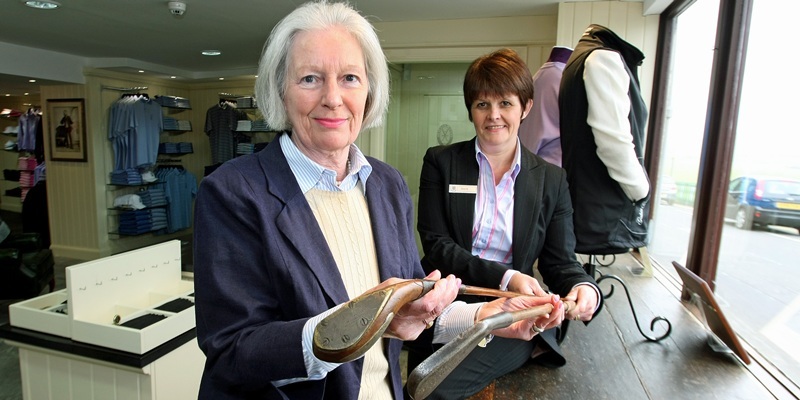Golf fans can now see the workbench where the father of the modern game made clubs and balls, after it was uncovered during renovations.
Tom Morris’s workbench, the fireplace where he heated and shaped balls and what is believed to be the locker where he stored his clubs were found in the shop where he traded.
The artefacts, expected to attract global attention, went on display on Thursday as the Tom Morris Golf Shop was reopened by St Andrews Links Trust.
The oldest golf shop in the world, it was launched by four-time Open champion Morris in 1866, 18 years after he began his ball and clubmaking business.
It was taken over last year by the trust, which manages the town’s seven public courses.
The furniture was uncovered during renovations over the winter and now forms part of a display in the shop celebrating the achievements of Morris as a player, greenkeeper, course architect, club and ball maker, family man and businessman.
A sign on the front of the shop also features the name T. Morris as it would have looked in the 19th century.
As the shop opened its doors again, trust chief executive Euan Loudon said, “This is another chapter in the long and proud history of the Tom Morris name in St Andrews and his close association with the Old Course and St Andrews Links.
“When the previous owners approached us regarding the business we felt it was very important that Tom’s rich heritage was preserved and that ownership remained in St Andrews.”
Sheila Walker, great-great-granddaughter of Morris, still lives above the shop and is delighted to see some of his equipment go on show.
She said, “Our family has always been tremendously proud of Tom’s life and work.
“He dedicated himself to his family and to golf and his legacy is all around us here in St Andrews and, indeed, wherever golf is played.
“His workshop and business were extremely important to him and it is exciting to see some of his furniture is being preserved and put on display in the shop.”
Morris was influential in the development of golf, the Open Championship and the Old Course and St Andrews Links in particular.
His series of high-profile matches against Willie Park in the 1860s to 1880s attracted newspaper coverage and brought the game to a wider audience.
Employed for nearly 40 years by the Royal and Ancient Golf Club as keeper of the green, he made many improvements to the Old Course, including building the first and 18th greens, enlarging many to double greens and clearing gorse which made today’s anti-clockwise routing possible.
He also laid out the New Course which opened in 1895. He was the first to apply sand to the Old Course.
Morris was also involved in the original layouts of some of Britain’s most famous courses, including Carnoustie, Prestwick, Muirfield and Royal North Devon.
In 1868 he was beaten in the Open by son Tommy, who became the youngest Open champion at 17.
Tommy won the Open three more times before he died at the age of 24.
